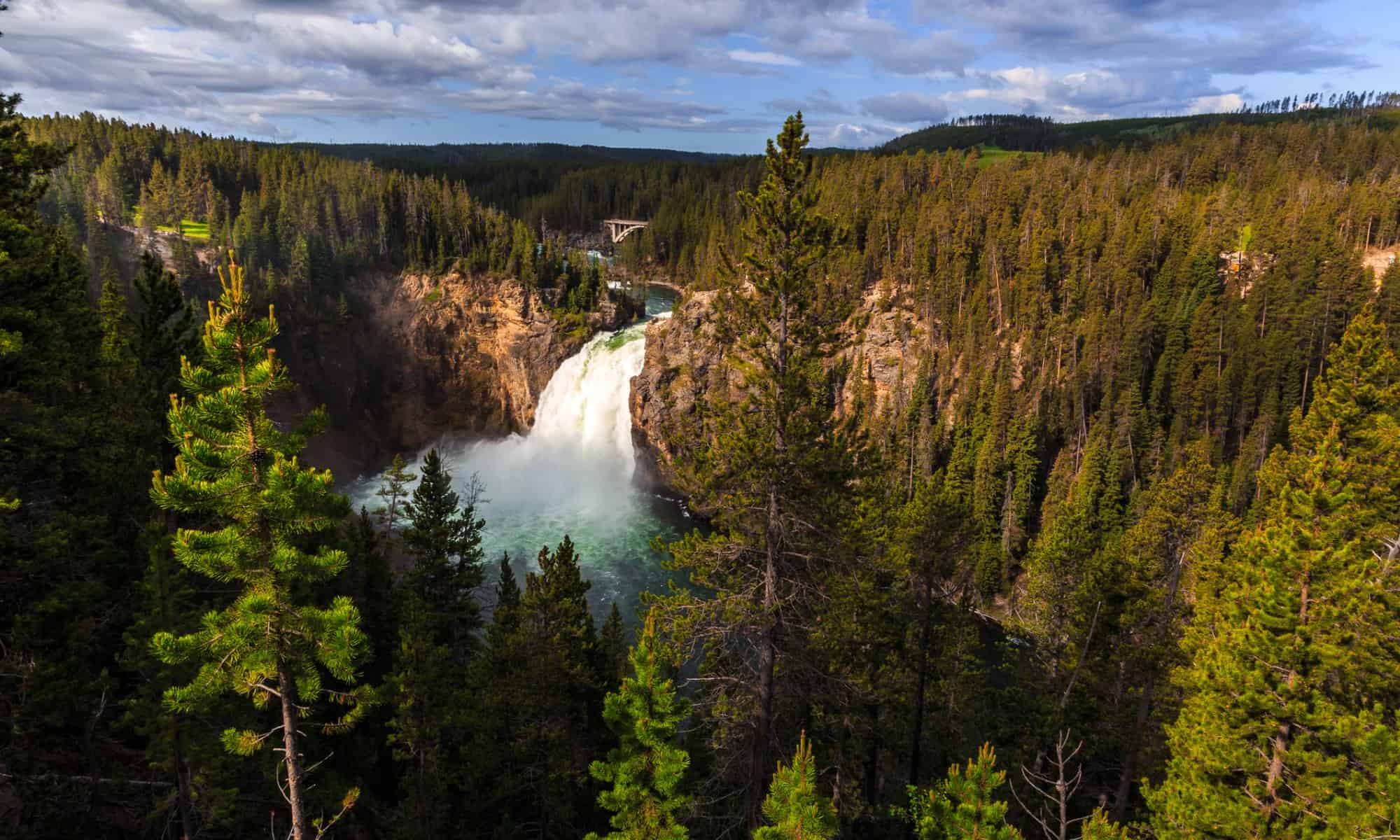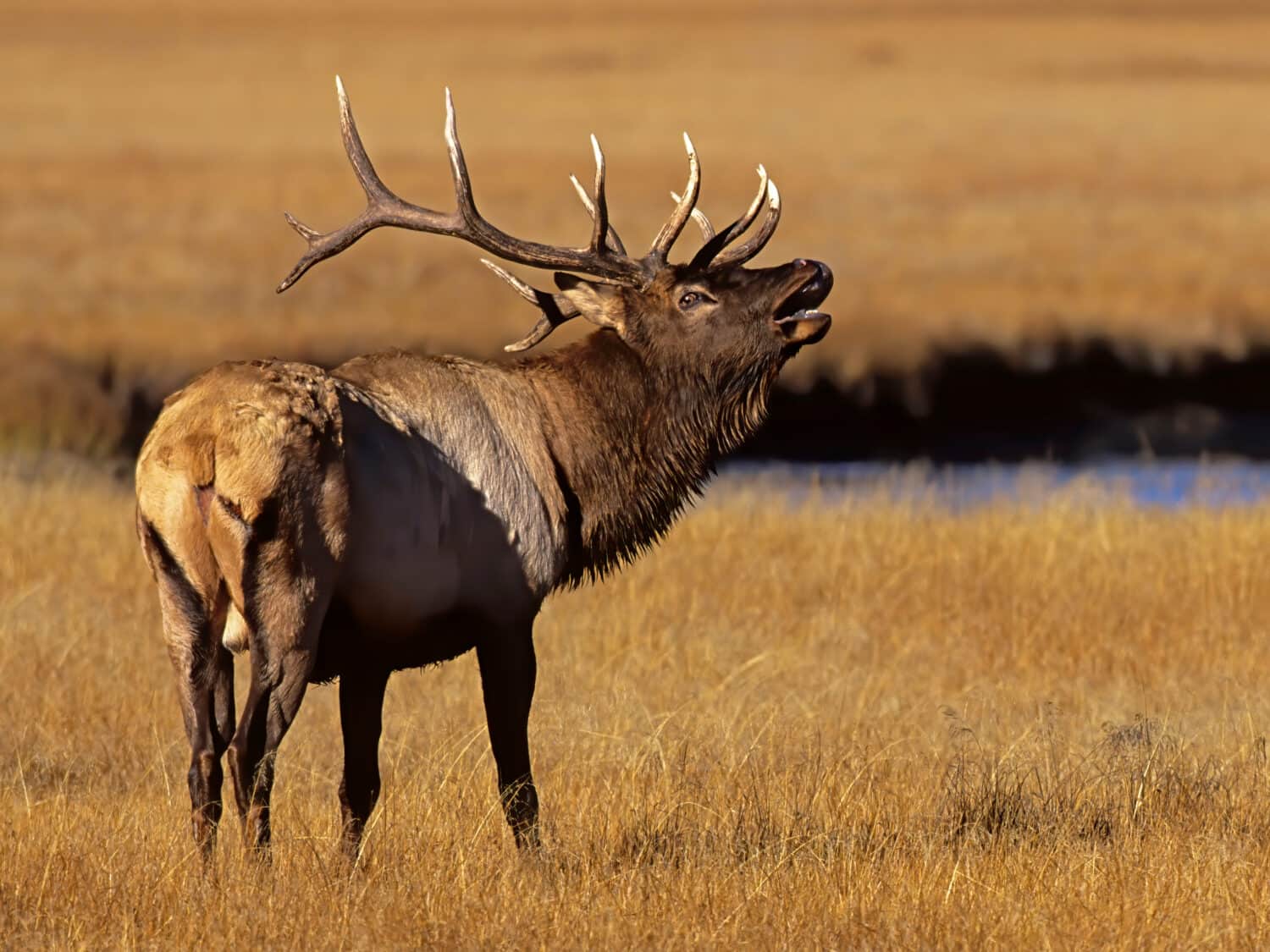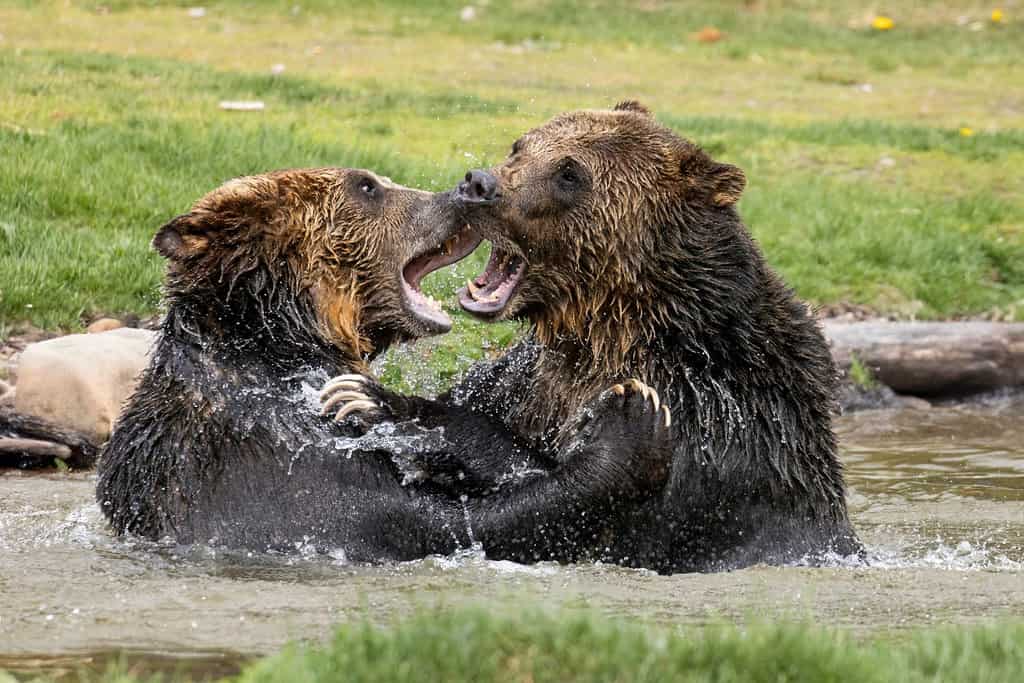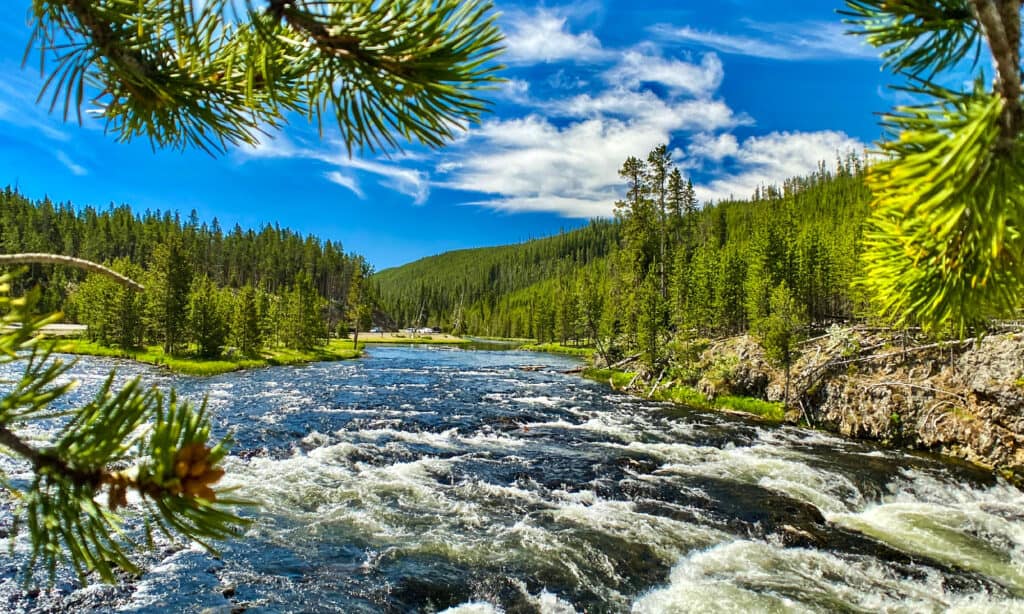The Yellowstone River is as majestic and breathtaking as a river can get, and it happens to be in the U.S. Did you know that Yellowstone Park was given the name because of the river? This amazing river starts off as a trickle of melted snow and becomes the longest undammed river in the country. It holds many secrets of centuries past, and some of it is inaccessible and completely wild. Let’s see what other facts about the Yellowstone River we can find.
1. Yellowstone River is Super Long

In Wyoming, the Yellowstone River is narrow, but as it closes in on the Missouri River, it becomes much wider and gentler.
©Nina B/Shutterstock.com
How long, you might ask? It is 692 miles long, which is impressive. The river travels through Wyoming, Montana, and North Dakota. It begins as a small trickle of melted snow in the Rocky Mountains of Wyoming. It turns into amazing whitewater and waterfalls in Yellowstone Park before slowly becoming wider until it meets the Missouri River.
2. It’s the Last Major Undammed River in the U.S.

The people of the Yellowstone River refused to give up until they won, which absolutely happened.
©Steeverr/iStock via Getty Images
What makes the Yellowstone River special besides its beauty is that it is the longest major river that has remained undammed all this time. It hasn’t always been easy, though. In 1970, a dam was proposed that would flood Paradise Valley. However, fast-thinking conservationists came to Yellowstone River’s rescue and refused to let the dam be built. Allenspur Canyon was safe, as was the river. It was a major win then and is still widely applauded today. The dam would have changed the environment, wildlife, and economy of the entire region otherwise.
3. The Yellowstone River is Who to Thank for Two of the Amazing Waterfalls in the Park.

The Yellowstone River waterfalls are humbling.
©iStock.com/Bartfett
Within Yellowstone National Park are two phenomenal waterfalls on the Yellowstone River that are frequently seen in pictures. They are the Upper and Lower Falls. The Lower Falls are actually more impressive than the Upper, though neither are the tallest waterfalls in the park. The tallest is the Silver Chord Waterfall, which descends 1200 feet. The Lower Waterfall is only 308 feet, but as it comes crashing down in a wide stream of water, it is the most impressive and is the most photographed waterfall in the park. The Upper waterfall descends 109 feet into the yellow rock canyon below. They are both truly magnificent.
4. The Yellowstone River was Once Called the Elk River

The Yellowstone River is flanked with yellow rocks on either side throughout the Grand Canyon of Yellowstone.
©Danita Delimont/Shutterstock.com
Long ago, in the late 1700s or early 1800s, Native Americans referred to the Yellowstone River as the Elk River. The Crow Indians called the vast river “Encheda-cahchi-ichi” or Elk River due to the migratory path of the elk. They traveled from the Yellowstone highlands to wintering grounds in the lower valleys next to the stream. Aboriginal use of the name Elk River was also present, though their spelling and pronunciation were different. Their version of the Elk River was said as “Ca-tan-wa-hove.” There were also finds of another rendition of the name “Elk River” by the Minnetaree Indian in the form of “Mi tse a-da-zi.”
5. The River Once Carried the Legendary John Colter

John Colter spent at least 2 – 4 years in the Tetons with the Yellowstone River as a passage out of the area.
©Charles Marion Russell / Public domain - License
John Colter, a legendary frontiersman and mountain man of the Tetons, once spent time in a canoe on the Yellowstone River. Colter set out along with the Lewis and Clark Expedition to the Pacific. He spent the years of 1803 – 1806. From there, he set out from a fur-trading fort on the Big Horn River. That is where Colter met Manuel Lisa of the Missouri Fur Company, who decided to accompany him as he paddled the Yellowstone River.
They built what was known as Manuel’s Fort, and from there, Colter decided to brave the river alone in search of the Crow Indians. In 1808, Colter ventured alone into the territory now known as Yellowstone Park. After journeying for 500 miles north, Colter was with a group of Indians when another tribe attacked them. He was badly injured and had a lame leg. Colter made it alone back to the fort several hundred miles away.
6. The Biggest Threat to the River Today is Climate Change

Numerous floods have occurred around Yellowstone River, which has caused serious damage to the ecosystem.
©Kelly vanDellen/Shutterstock.com
Severe flooding occurred June 12 – 14, 2022, along the Yellowstone River through Yellowstone Park. It was the most severe flooding they had seen in at least 100 years. Trees were ripped down and floated by, a sewage line broke and poured tens of thousands of gallons of raw sewage into the river, towns were evacuated, rescues were made, and even an apartment building for the park’s workers was sucked into the angry river. The damage was beyond the comprehension of the park rangers. On June 13, flood waters peaked at 14.72 feet.
Another catastrophic “100-year-flood” happened in 1997. This is what climate change does, and it will only continue.
7. Another Threat is Big Oil and Their Spills

Oil kills everything it touches and can destroy entire ecosystems.
©M/iStock via Getty Images
In 2011, ExxonMobil, a major oil spill, took place supposedly because of flooding. They spilled 1,500 barrels or 63,000 gallons of oil along the waterway and caused the evacuation of about 140 people near Laurel, Montana. It happened again in 2015, also with an ExxonMobil pipeline outside of Yellowstone Park. This time, it spilled nearly 40,000 gallons of crude oil into the Yellowstone River and contaminated a local city’s water supply.
This will continue to happen with pipelines, which should never occur near waterways. It will kill entire ecosystems and all of the river’s inhabitants, which will also kill the animals who eat the fish or other life.
8. The Yellowstone River is a Crucial Food Source for Many Predators

Many animals who call the river and park home depend on the food sources found in the river.
©Kenneth Keifer/Shutterstock.com
Everything predatory in Yellowstone Park and beyond hunts for fish or other life in the river. Those who don’t hunt the animals that come to the river for water. Bears, wolves, cougars, bobcats, otters, and many other animals depend on the river. From the tiniest fish to the largest predator, the river is a source of life.
9. The River Cuts through the Grand Canyon of Yellowstone

As the Yellowstone cuts through the canyon, it creates a magical imagery.
©Jacob Powers/ via Getty Images
The Grand Canyon of Yellowstone is phenomenal in appearance, thanks to the Yellowstone River. This canyon was the namesake of the river since the stones and sides of the canyon are yellow. Some of the best waterfalls can also be seen here.
10. The Yellowstone River is One of the Most Scenic Rivers in the U.S.

One thing is given: the Yellowstone River is beautiful and wild.
©iStock.com/samuel howell
The Yellowstone River is beautiful and completely wild. It is filled with clear water and rapids but also flat and calm. It is an important part of the ecosystem in three states and should be treated with respect and kindness. Humans have caused the threats it faces, and it is up to us to keep it clean and healthy.
The photo featured at the top of this post is © Kelly vanDellen/Shutterstock.com
Thank you for reading! Have some feedback for us? Contact the AZ Animals editorial team.







